


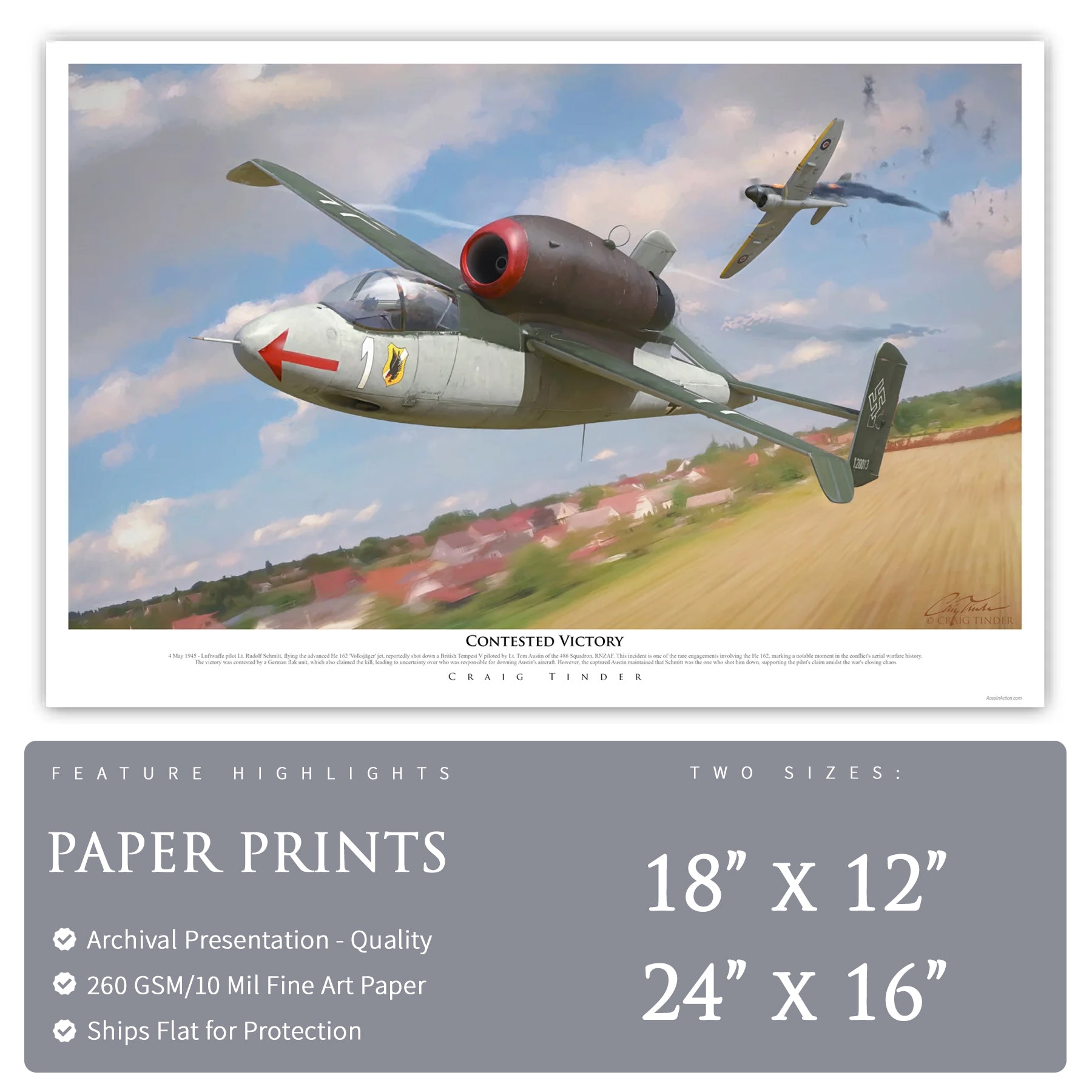
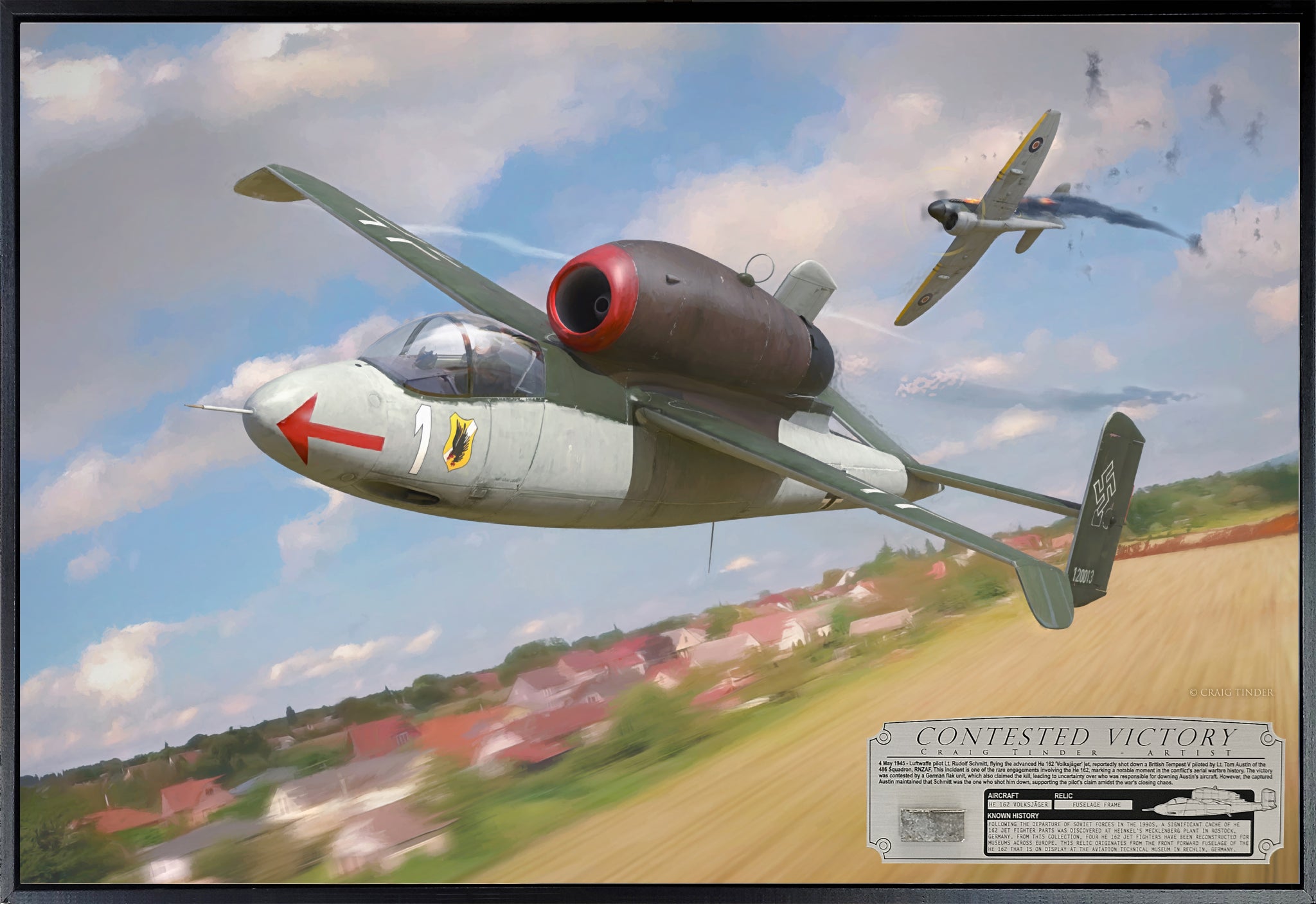
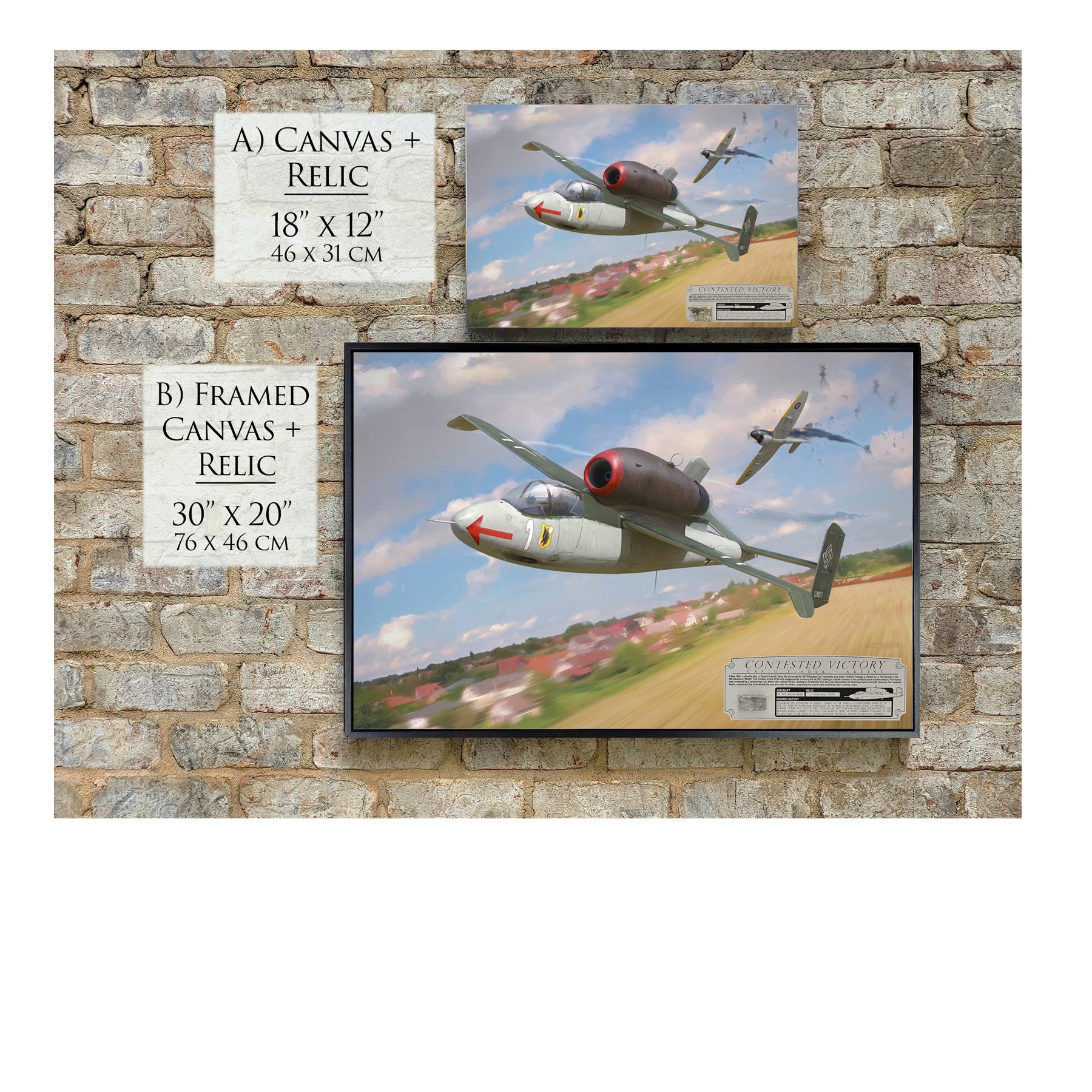
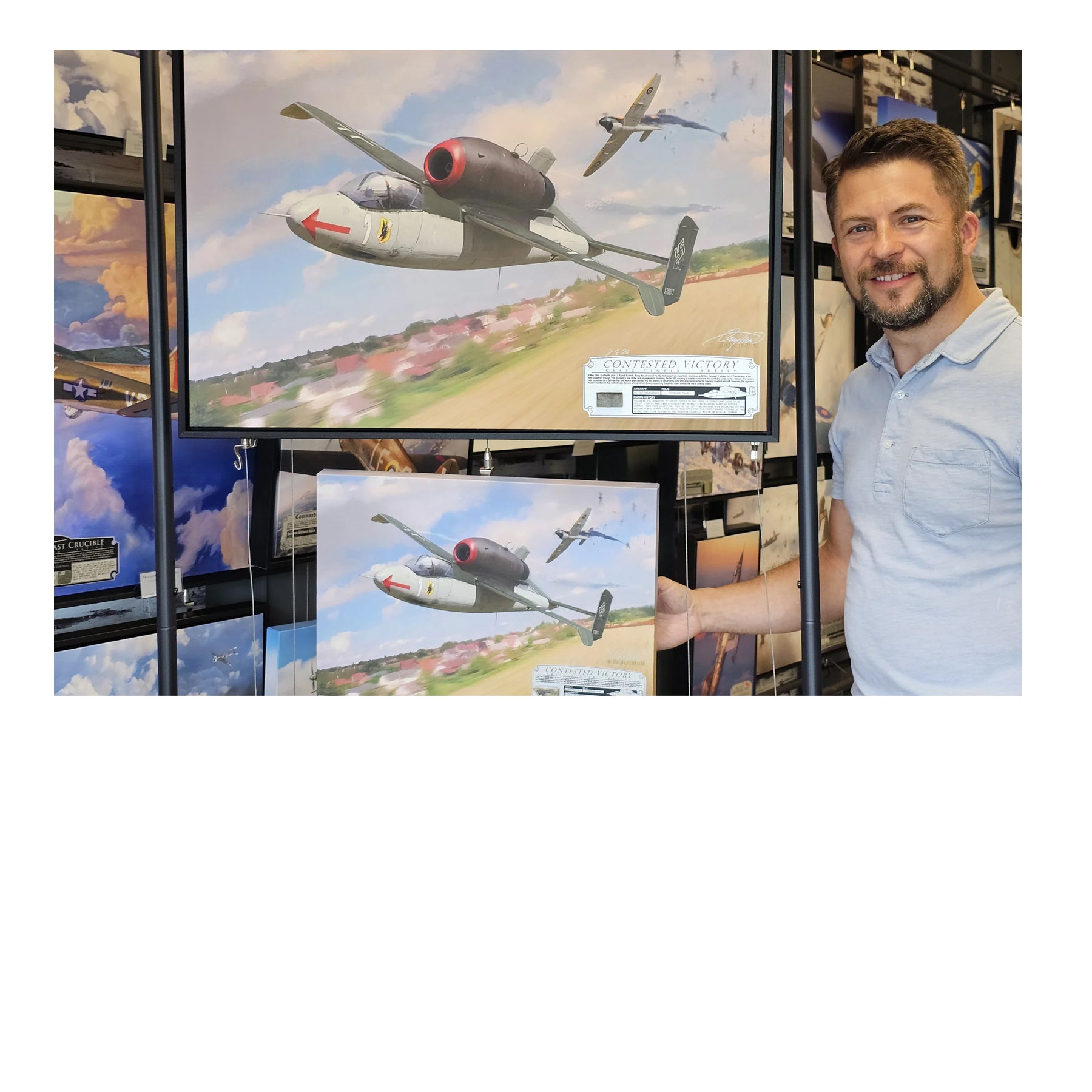
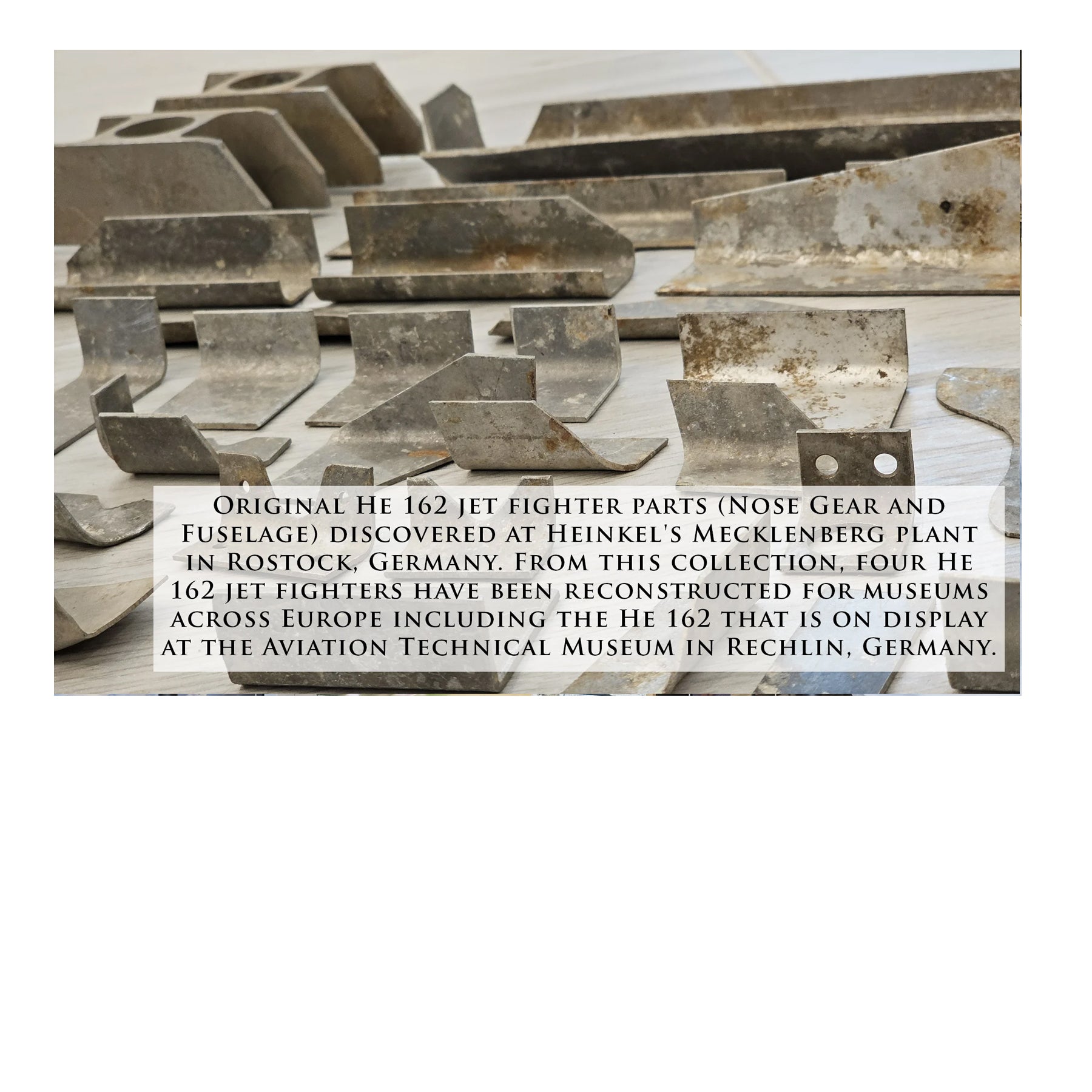
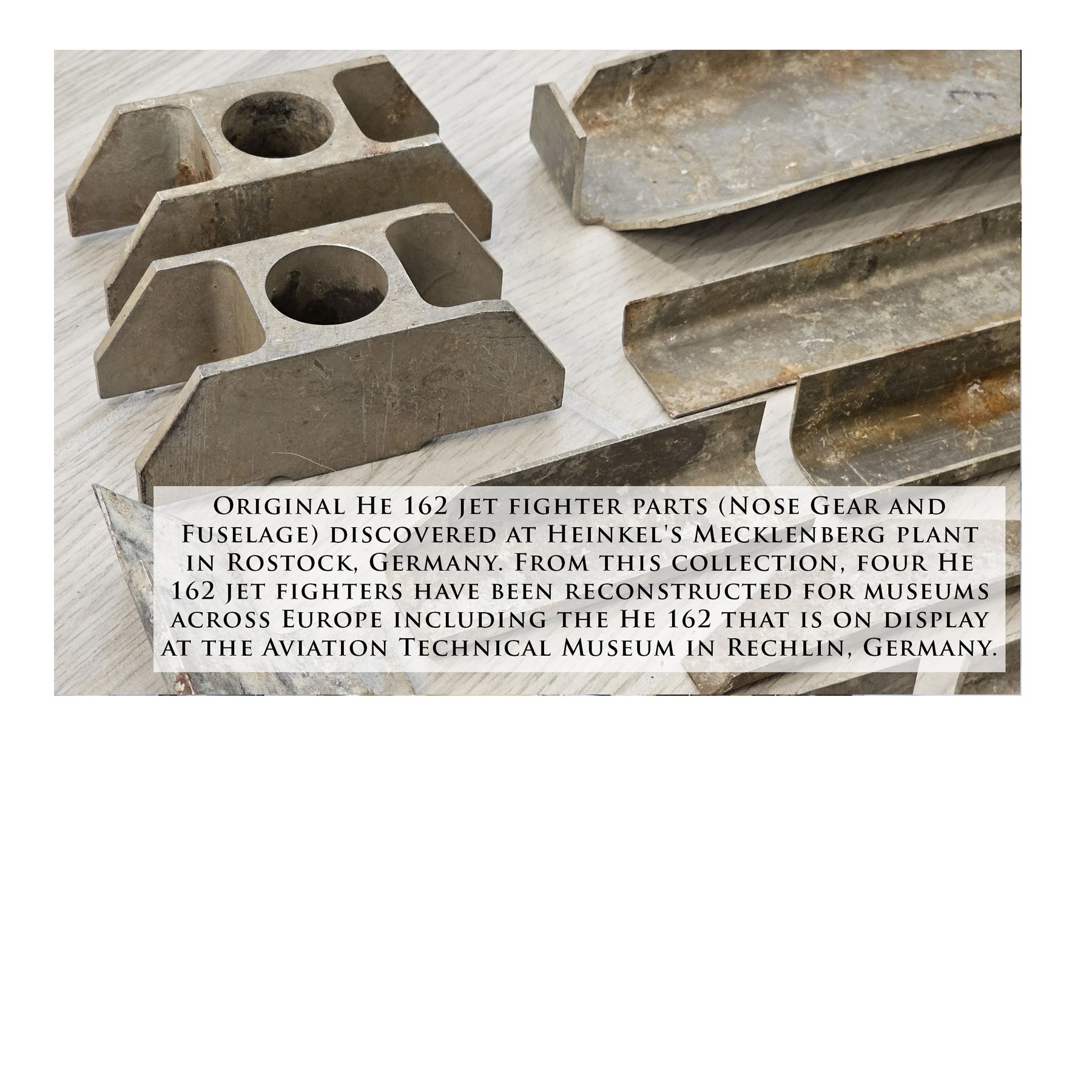
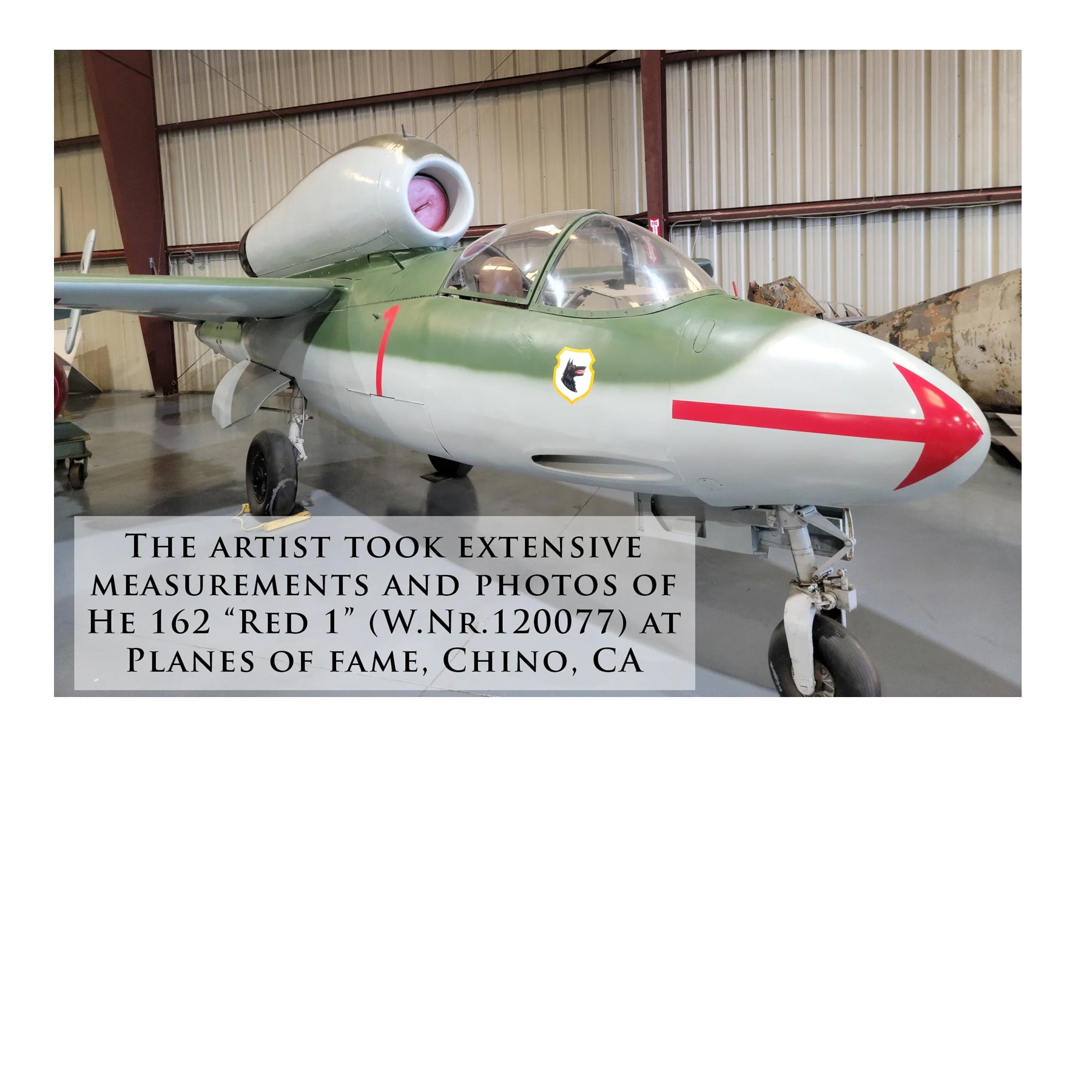

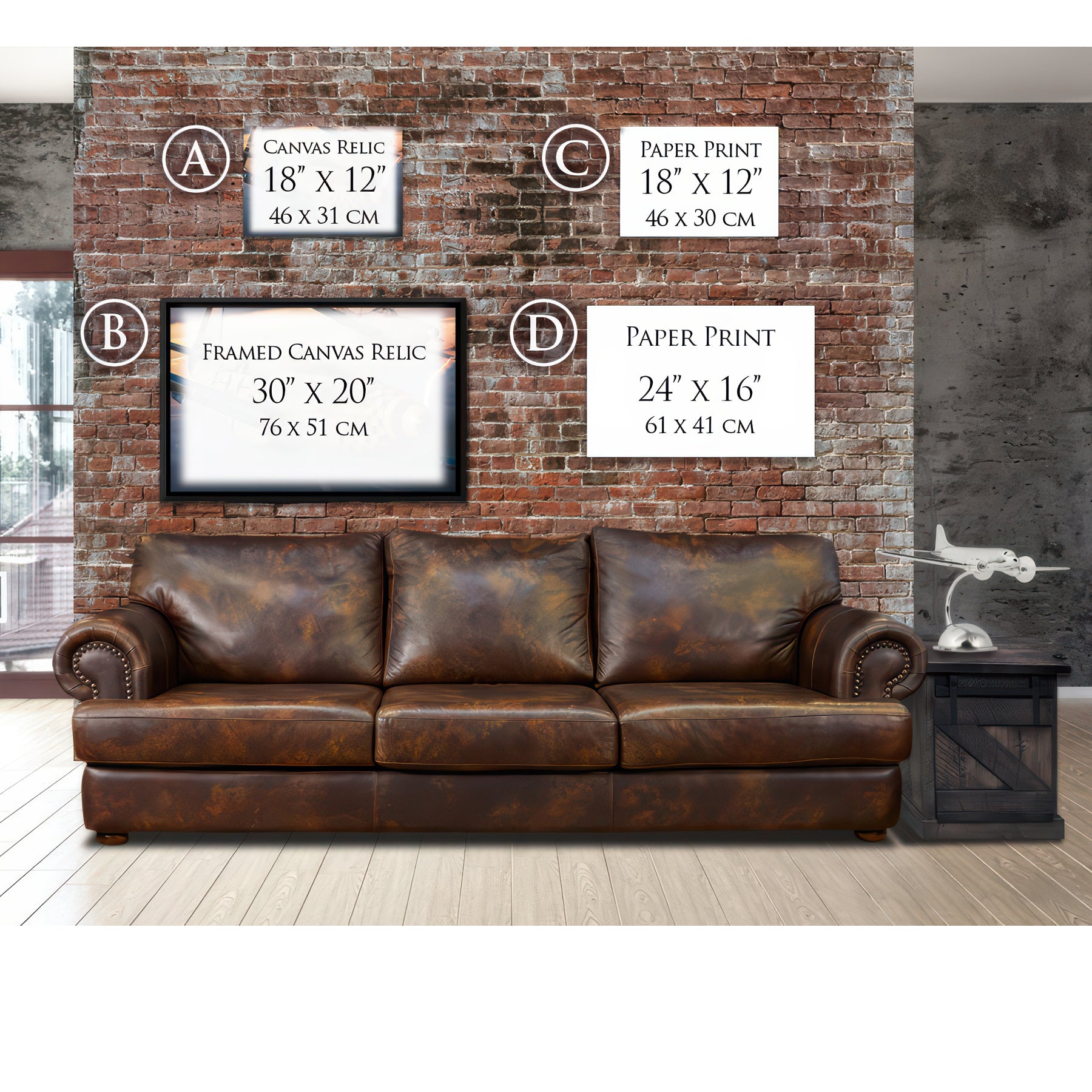
He 162 Salamander - Contested Victory Canvas | INCLUDES: Fuselage Relic

He 162 Salamander - Contested Victory Canvas | INCLUDES: Fuselage Relic
If you have any questions, you are always welcome to contact us. We'll get back to you as soon as possible, within 24 hours on weekdays.
Shipping Information
Use this text to answer questions in as much detail as possible for your customers.
Customer Support
Use this text to answer questions in as much detail as possible for your customers.
FAQ’s
Use this text to answer questions in as much detail as possible for your customers.
Contact Us
Use this text to answer questions in as much detail as possible for your customers.
Description
About the Relic & Process
These original He 162 components were provided by D. Lemp in partnership with the Rechliner Museum and are left-over remnants from the restoration of the He 162 on display at the Aviation Technical Museum in Rechlin, Germany.
Restored He162 Salamander "White 4" - Aviation Technical Museum
Following the withdrawal of Soviet forces from East Germany in the 1990s, long-inaccessible areas previously used by the German military during World War II became available for exploration. These sites, including former war production facilities and airfields, yielded numerous artifacts from Germany’s late-war aviation projects. Among the most significant finds were crates of parts of the Heinkel He 162, a rare jet fighter developed during the final months of the war. Although Soviet forces took the BMW 003 jet engines to the Soviet Union for testing, the majority of airframes and components were left behind. These parts had been stranded at various locations by the departing Russians, waiting to be uncovered. He162 Salamander relics
He162 Salamander relics 
He162 Salamander relics
Large portions of original He 162 components were recovered from former production facilities, including the main Heinkel plant in Rostock, which had been heavily bombed during the war. To disperse production, the Germans established smaller, more concealed sites in Mecklenburg, including a factory hidden in the forest near Rövershagen and another at the Barth airfield on the Baltic Sea. These sites were key locations where many He 162 parts were manufactured.
Heinkel Factory - Rostock Germany
Parts found at these sites have since been used to rebuild several He 162 aircraft, including "White 1" which is currently displayed at the Aviation Museum in Rechlin. Though most wooden components had to be reconstructed, much of the original structure remains intact, showcasing the ingenuity and desperation of late-war German aircraft production. Among the items recovered were cockpit components, armored plates, and original production tools such as drilling templates.
Restored He162 Salamander "White 4" - Cockpit
Restored He162 Salamander "White 4" - Front Landing Gear Bay
With just over 300 built before the end of the war, only 110 were actually delivered to the Luftwaffe. Only seven original aircraft remain to this day, with an additional four replicas built using original parts from this cache - making these pieces incredibly rare. Each relic included with the print originate from the cockpit and nose gear section of the He 162 Salamander. Remaining He162 Salamander components acquired by Aces In Action
Remaining He162 Salamander components acquired by Aces In Action
Disclaimer
By purchasing from Aces In Action, you acknowledge that the product may vary slightly from the images on our website. We use authentic materials from military vehicles and relics, which may contain potentially hazardous substances. These items are not intended for ingestion, inhalation, or use by children. Aces In Action is an independent company, unaffiliated with or endorsed by any other organization. All names, logos, and trademarks are the property of their respective owners and are used for identification only, in accordance with the Lanham Act. Their use does not imply any official endorsement.
